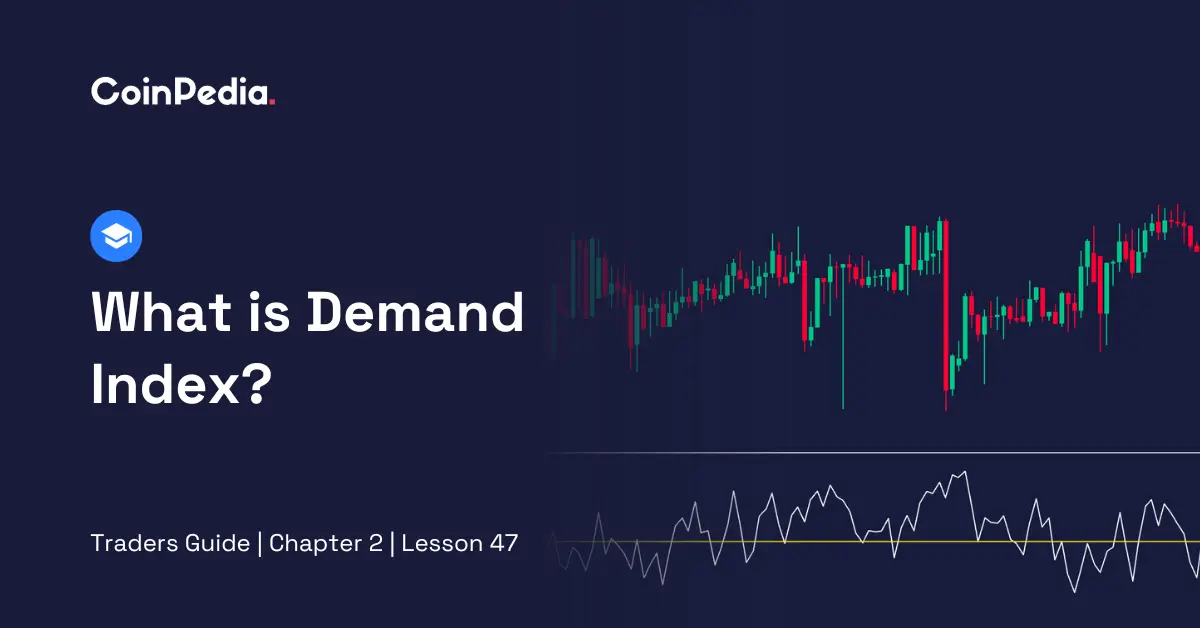
Some indicators are only available on very few platforms, making them rare indicators. The limited availability of these indicators itself is a compelling reason to take a keen interest in them. The Demand Index indicator is one such rare indicator. Intelligent traders understand the importance of investing time in learning indicators that are less known. Let’s master this indicator to gain an edge over our competitors in the competitive field of crypto trading.
The Demand Index indicator is a popular technical indicator that utilises both price and volume data to evaluate the levels of buying and selling pressure influencing an asset.
James Sibbet, a financial expert, created the Demand Index indicator. He wanted a more sophisticated way to understand the balance between people who want to buy an asset and those who want to sell it.
Calculating the Demand Index is complex. Before going deep into the formula, it is better to know about its parameters.
The Demand Index formula has four important parameters:
Time to explore the calculation part.
To launch the Demand Index on a TradingView chart, follow these basic steps:
Divergence is the price signal a trader generally looks for in this indicator. If the the Demand Index line diverges from the price and moves in the opposite direction, it is an important trading signal.
Beyond this general idea, there are six important rules the developer itself coined at the time of introduction of this indicator. In order to have a better or deeper interpretation, understanding these rules is important.
When the indicator was originally published, Mr. Sibbet introduced six rules in order to help users use the indicator in the best possible way.
These rules are:
When the Demand Index diverges from the price and moves in the opposite direction, it is a sign of a potential bearish (downward) market trend.
After the Demand Index reaches an extreme peak, prices often trend to rally to new highs. This suggests a bullish (upward) market trend.
When prices rise but the Demand Index remains low, it can indicate a market top. In simple terms, it might be a good time to consider selling.
If the Demand Index crosses through the zero line, it can signal a change in the market trend.
When the Demand Index hovers close to the zero line, it suggests weak price movement that is unlikely to last for long.
If a long-term divergence between the Demand Index and price develops, it can predict a major market top or bottom. This is a strong indicator for potential trend reversals.
Also Read: Boost Your Trading IQ: Understanding the Price and Volume Trend in Crypto
In conclusion, the Demand Index indicator, developed by financial expert James Sibbest, integrates price and volume date to assess buying and selling pressure in an asset. Its complex calculation involves parameters like price, constant, periods, and HighLowBars. Utilising TradingView facilities easy application, allowing customisation of key parameters. Traders focus on divergence for crucial signals, guided by six rules established by Sibbet. These rules encompass bearish divergence, new highs, top indicators, zero line crossing, near-zero conditions, and long-term divergence, providing valuable insights for market trend analysis.
CoinPedia has been delivering accurate and timely cryptocurrency and blockchain updates since 2017. All content is created by our expert panel of analysts and journalists, following strict Editorial Guidelines based on E-E-A-T (Experience, Expertise, Authoritativeness, Trustworthiness). Every article is fact-checked against reputable sources to ensure accuracy, transparency, and reliability. Our review policy guarantees unbiased evaluations when recommending exchanges, platforms, or tools. We strive to provide timely updates about everything crypto & blockchain, right from startups to industry majors.
All opinions and insights shared represent the author's own views on current market conditions. Please do your own research before making investment decisions. Neither the writer nor the publication assumes responsibility for your financial choices.
Sponsored content and affiliate links may appear on our site. Advertisements are marked clearly, and our editorial content remains entirely independent from our ad partners.
The LINK price prediction December 2025 is the main topic this week with December just…
Poland is facing a heated political clash after President Karol Nawrocki refused to approve a…
The trading industry stands at a critical crossroads: challenged by issues of financial trust and…
Investors are on the hunt for the next 10x crypto as the market enters a…
Zcash (ZEC) price has spent the past week at the bottom of the performance rankings,…
Ethereum, one of the biggest blockchain networks, is gearing up for a major upgrade. On…